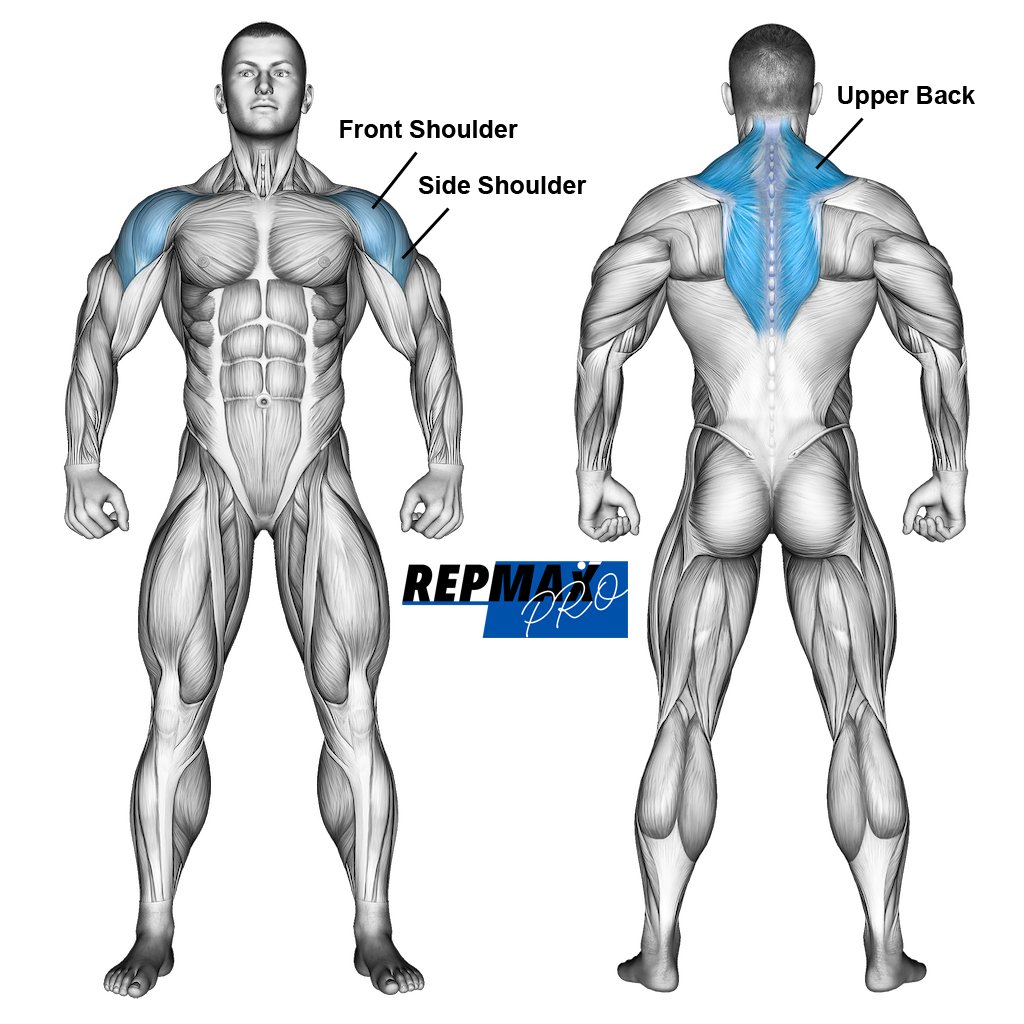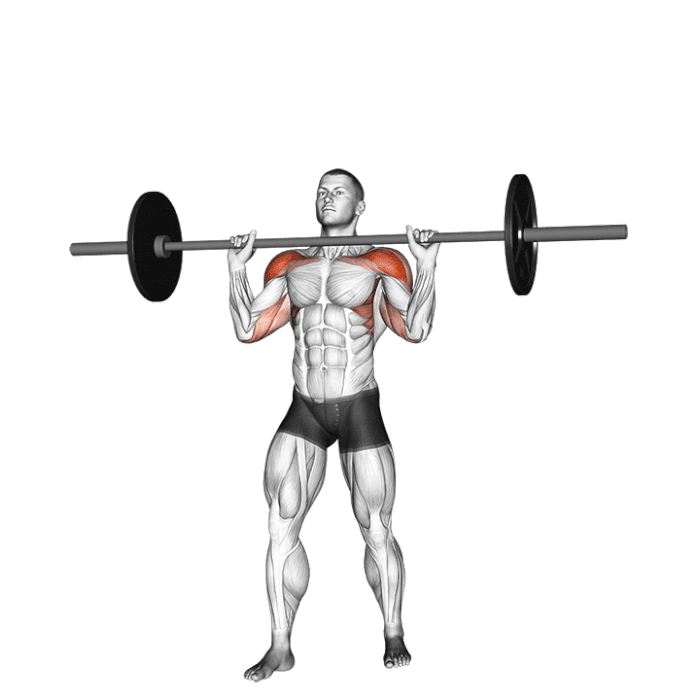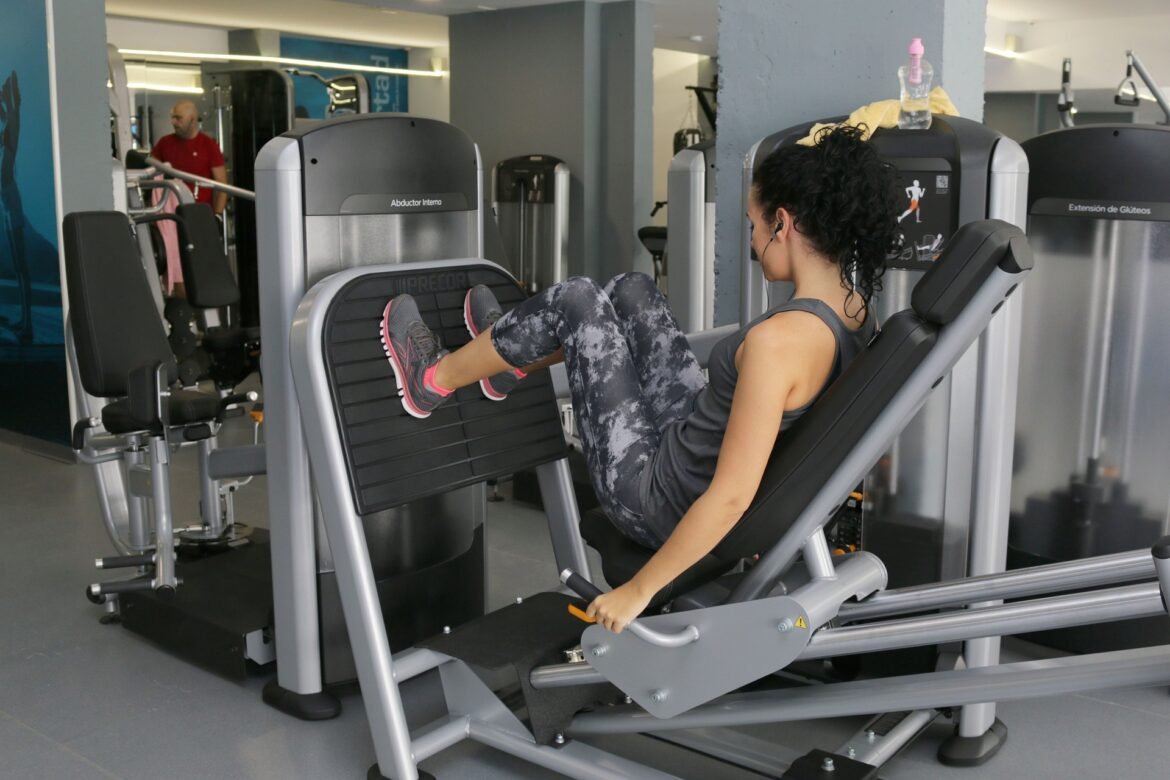Reverse Curls
Reverse Curls are an effective strength-building exercise that targets the muscles in your forearms and biceps. This exercise is performed by holding a barbell or dumbbell with an overhand grip, focusing on strengthening the forearms, and biceps, and improving grip strength. Unlike traditional bicep curls, reverse curls emphasize the brachioradialis muscle in the forearm, making it an ideal addition to any upper-body workout routine.
They are a variation of the traditional curl exercise where the palms face down (pronated grip), instead of up (supinated grip). This small adjustment shifts the focus away from the biceps and onto the muscles of the forearm and upper arm, making it an effective compound movement for overall arm development. The exercise is typically performed using a barbell, EZ bar, or dumbbell.
Targeted Muscle Groups

Primary Muscles:
- Brachioradialis: This is the primary muscle targeted by reverse curls. Located in the forearm, the brachioradialis helps with elbow flexion and contributes to a fuller, more defined forearm.
Secondary Muscles:
- Biceps Brachii: Although reverse curls shift focus away from the biceps, this muscle still plays a supporting role in the movement.
- Brachialis: Located underneath the biceps, the brachialis is another muscle activated during reverse curls, aiding in elbow flexion.
- Wrist Extensors: These muscles stabilize the wrist throughout the movement, preventing it from bending during the lift.
Equipment Needed
- Barbell or EZ Bar: A barbell is the most common equipment used for reverse curls. An EZ bar, with its curved handles, is a great alternative for those seeking reduced wrist strain.
- Dumbbells: Dumbbells can also be used for this exercise, allowing for greater flexibility and independent arm movement.
- Weight Plates (for barbell): Adding weight to the barbell increases resistance for those looking to advance in the exercise.
How to Do Reverse Curls: Step-by-Step Guide
Step 1: Set Up Your Position
- Grip the Bar: Stand with your feet shoulder-width apart, holding a barbell or EZ bar with an overhand grip (palms facing down). Keep your hands shoulder-width apart for a comfortable grip. If using dumbbells, hold one in each hand, palms facing the body.

Muscles used in the military press.
Illustration credit © Aliaksandr Makatserchyk
Step 2: Starting Position
- Body Alignment: Keep your torso upright and engage your core. Allow the barbell or dumbbells to hang at arm’s length in front of your thighs, with your elbows fully extended and close to your torso.
Step 3: Lift the Weight
- Curl the Barbell: Keeping your elbows stationary, slowly curl the barbell upward by bending your elbows. Focus on using your forearms and the brachioradialis to lift the weight. Raise the barbell until your forearms are parallel to the floor or slightly higher.
Step 4: Lower the Weight
- Controlled Lowering: Slowly, controlled, lower the barbell or dumbbell back to the starting position. This eccentric (lowering) phase is crucial for maximizing muscle engagement and preventing injury.
Step 5: Repeat
- Perform Repetitions: Continue curling and lowering the weight for the desired number of reps while maintaining proper form throughout the exercise.
Recommended Reps and Sets
- Beginners: 2-3 sets of 8-10 reps
- Intermediate: 3-4 sets of 10-12 reps
- Advanced: 4-5 sets of 12-15 reps with increased weight
Pro Tips for Success
- Use an EZ Bar to Reduce Wrist Strain: If you experience discomfort in your wrists during reverse curls, try using an EZ bar. The angled grips provide a more natural wrist position.
- Control the Tempo: Avoid rushing through the exercise. Slow, controlled movements, particularly during the lowering phase, will help maximize muscle engagement and ensure proper form.
- Engage the Core: Keep your core tight to stabilize your upper body. This will help prevent swaying or using momentum to lift the weight.
- Focus on the Brachioradialis: Mentally focus on the brachioradialis and forearms as you perform the movement. This mind-muscle connection helps activate the targeted muscles more effectively.
- Start Light and Progress Gradually: Since reverse curls emphasize smaller forearm muscles, start with a lighter weight and gradually increase as you build strength and improve your technique.
Common Mistakes to Avoid
- Using Momentum: One of the most common mistakes is using momentum or swinging the body to lift the weight. This reduces the effectiveness of the exercise and increases the risk of injury. Keep the movement slow and controlled.
- Bending the Wrists: Avoid bending your wrists during the lift. Keep them straight throughout the entire movement to prevent unnecessary strain and ensure the focus remains on the forearms and biceps.
- Lifting Too Heavy: Reverse curls target smaller muscles, so lifting too much weight can compromise your form. Stick to a weight that allows you to perform the exercise with proper technique.
- Letting Elbows Flare Out: Keep your elbows tucked close to your torso throughout the movement. Letting them flare out shifts the emphasis away from the targeted muscles.
Reverse Curls are an essential exercise for building forearm and upper-arm strength. By targeting the brachioradialis, biceps, and wrist extensors, this movement enhances grip strength and improves the aesthetics of the forearms. Whether you’re a beginner or an advanced lifter, incorporating reverse curls into your routine will help you develop stronger, more defined arms.
Focus on proper form, use controlled movements, and gradually increase the weight for optimal results. Avoid common mistakes like using momentum or lifting too heavy, and remember to engage the core throughout the exercise. With consistency, reverse curls will enhance your arm workouts and overall upper-body strength.
